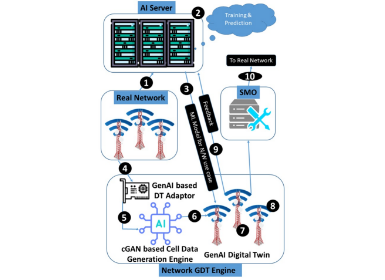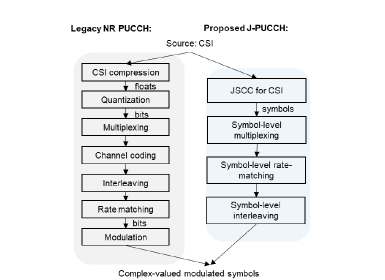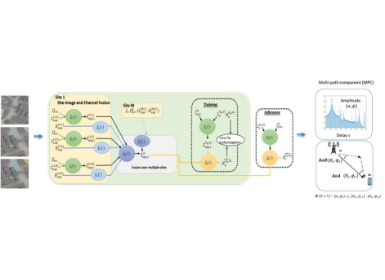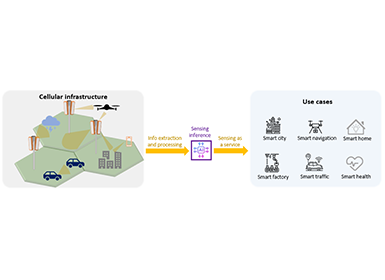Communications
A Graph Clustering-Based Resource Reservation Solution for Low-Latency Networks in Massive MIMO Systems
1. Introduction
The low-latency networks (LLNs), which have stringent latency requirements, play a crucial role in the digital transformation of network services in Industry 4.0. To meet stringent latency requirements, each network element needs to respond promptly to data transfer [3], as depicted in Figure 1. While transmission delays can be effectively controlled in the 5G core network via optical fiber connections, achieving comparable performance in the radio access network is challenging due to the constraints of wireless connections and limited spectral resources.
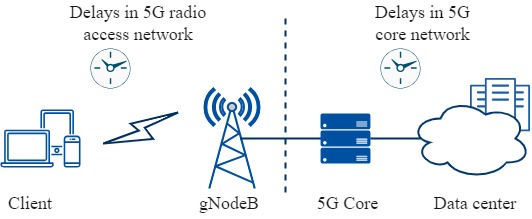
Figure 1. Transmission delay in different network parts
In this work, we propose a graph clustering-based resource reservation (RR) solution to address the high reservation ratios and resource waste of the conventional RR methods. We utilize a graph clustering approach to identify multi-user sets based on probabilistic multiplexing gain, optimizing resource use by grouping UEs with high co-transmission probabilities and low interference. Additionally, a frequency-spatial resource orchestration scheme is introduced to further minimize resource waste. Simulation results indicate that our solution improvements of up to 31% in resource reservation ratio (RRR) and 25.91% in latency assurance ratio (LAR) against the baselines.
2 Method
Our proposed framework consists of two main components: the graph clustering-based grouping module and the frequency-spatial resource orchestration module, as shown in Figure 2. The first module introduces probabilistic multiplexing gain as the weight of edge of UE graph, then groups UEs into multiple multi-user sets by utilizing the highest probabilistic multiplexing gain to improve the reserved timeslot efficiency. Inspired by the makespan optimization problem, the second module allocates frequency-spatial resources for each multi-user set with minimum frequency overhead. As a result, both timeslot and frequency resources reserved for low-latency service (LLS) UEs are optimized.
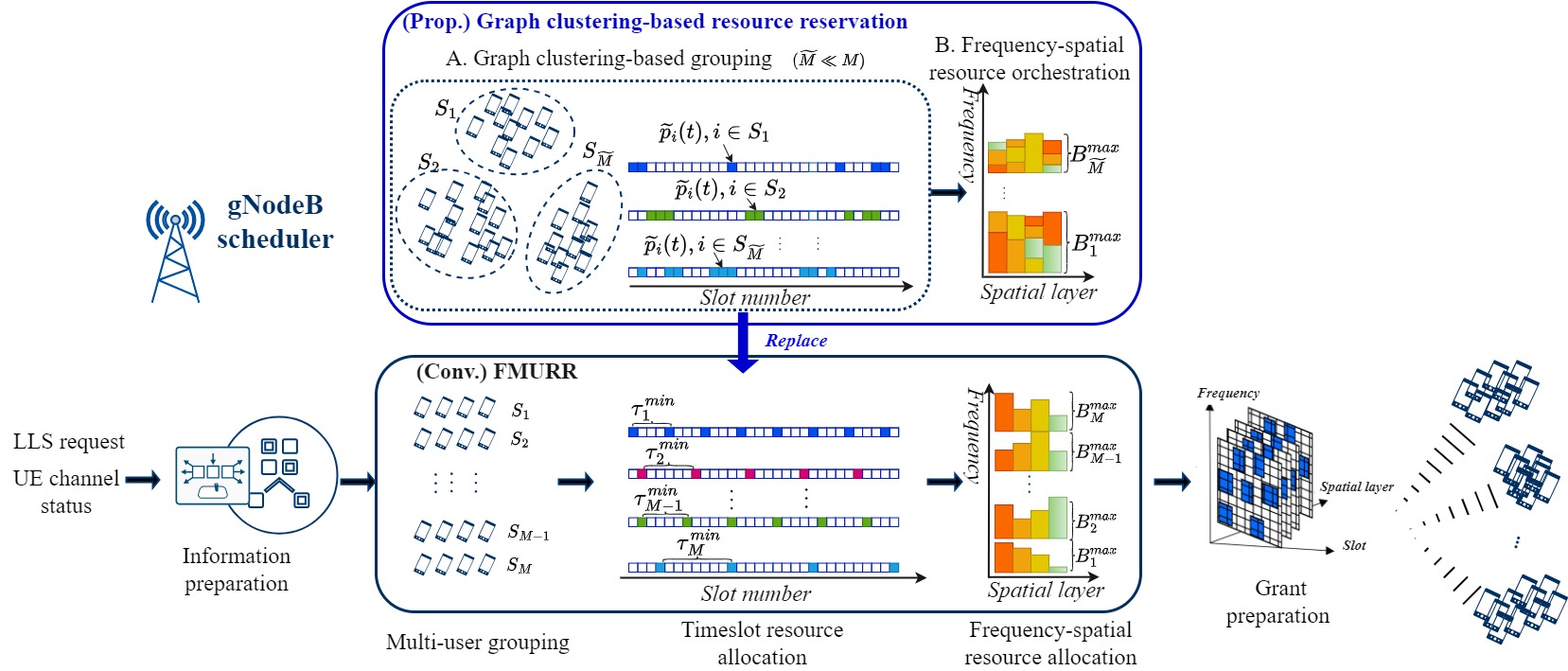
Figure 2. Overview of the graph clustering-based RR solution vs. the conventional pipeline-based FMURR solution
2.1 Graph Clustering-based Grouping
First, we model the transmission probability by taking both the latency budget and generation probability of the LLS packet into consideration. Second, inspired by the graph clustering algorithm, we define LLS UEs as the vertex set $V={UE_1, UE_1, …, UE_{\tilde K}}$, and $E$ as each edge between two vertices $UE_i$ and $UE_j$, which carries a weight $x_{ij}$ representing the probabilistic multiplexing gain of data rate by combining the co-transmission probability and mutual interference between $UE_i$ and $UE_j$. The weight adjacency matrix of UE graph is denoted as
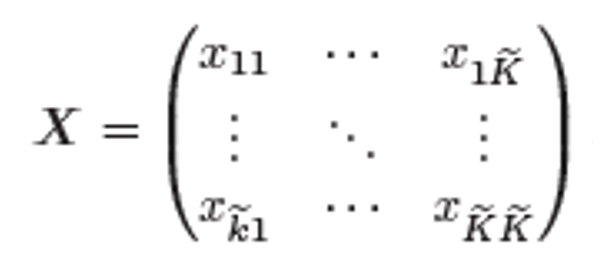
Finally, graph clustering-based multi-user grouping UEs by further utilizing the proposed weight adjacency matrix $X$ with the following objective function.
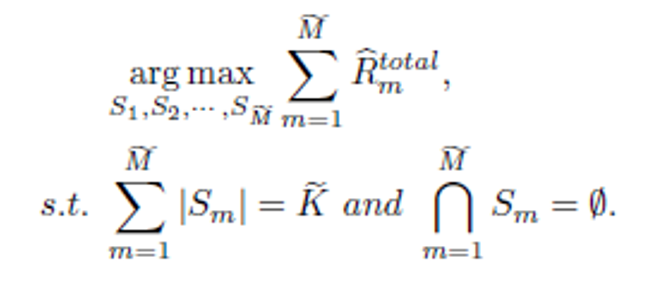
2.2 Frequency-Spatial Resource Orchestration
Inspired by the makespan optimization problem, which aims to minimize the maximum completion time of a set of jobs by allocating them to multiple machines [3], we depict the requested size of the frequency resources for UEs as the processing time of jobs, and the number of available spatial-layer resources as the number of machines. Then, the frequency-spatial resource allocation problem is transformed into a simple makespan minimization problem. Finally, we obtain the lowest frequency cost with the following objective function.
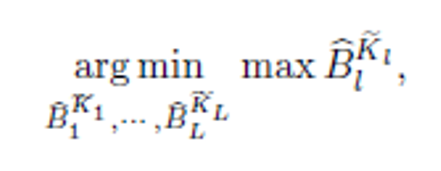
2.3 Complexity analysis and optimization
This part gives the complexity analysis and an optimization strategy to make the proposed method more deployable. With the complexity analysis, we found the complexity is strongly related with $\tilde K$ Specially, for the scenarios with hundreds or thousands of LLS UEs, the complexity will increase sharply. Therefore, we propose to add a pre-processing procedure to partition the large LLS UE list into several sub-lists before the proposed solution based on the co-transmission probability of UEs. Sub-lists with small $\tilde K$ allow our proposed method to operate with less complexity.
3 Results
A single-cell network scenario with 500 LLS UEs is setup on the system-level simulator. Each UE applies one of the three LLSs from Table I. The other simulation settings are shown in Table II. Initially, the performances of the basic functions are evaluated in single cell network without neighbor cell interference (NCI), thus the main interference comes from multi-user transmission only. Since NCI can not be neglected in practical networks, the performances of the overall solution is evaluated by introducing random interference on the sub-bands further.
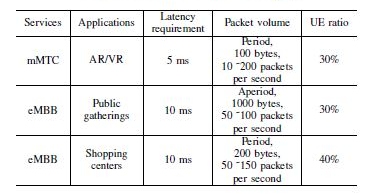
Table 1. Traffic Model Definition of LLS[1]
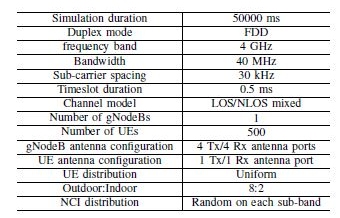
Table 2. Simulation Settings
First, the performances of the proposed graph clustering-based grouping method are evaluated. The proposed method groups UEs according to the probabilistic multiplexing gain and determines the timeslot based on the transmission probability. We compare the performances with the conventional fixed multi-user interference based resource reservation (FMURR) and the other RR method which only considers the co-transmission probability (CTPRR). As shown in Figure 3, FMURR exhausts almost all the frequency resources (RRR 99.55%), partial of LLS UEs cause longer transmission delay due to no reserved resources allocated (LAR 63.16% and 54.02% for 5ms and 10ms service, respectively). CTPRR reserves the least resources (average RRR 52.38%), but it does not consider the multi-user interference when grouping, much re-transmission cause the lowest LAR (LAR 15.79% and 20.40% for 5ms and 10ms service, respectively). Our proposed method has allocated 66.2% resources and has the highest gain in the LAR. The average transmission delay is shown in Figure 4, which also shows the proposed method has the smallest delay.
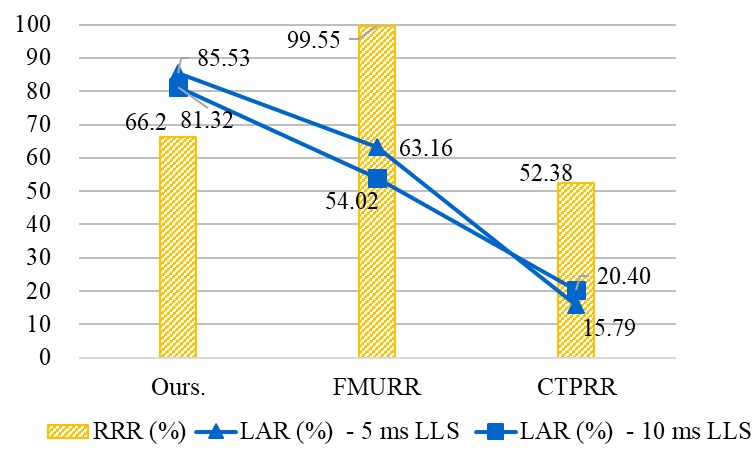
Figure 3. RRR and LAR comparison
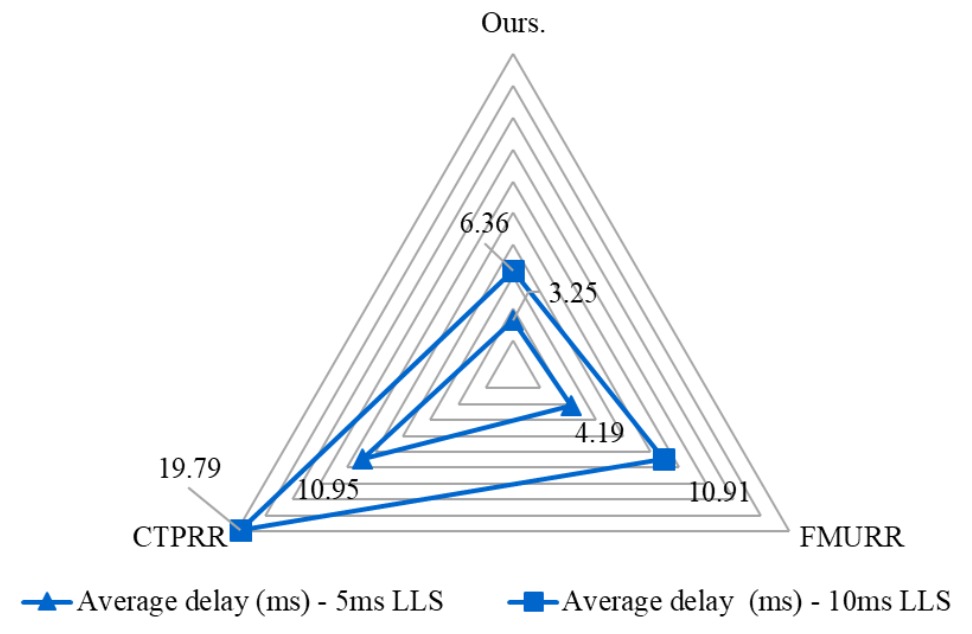
Figure 4. Average delay comparison
Then, the performances of the proposed frequency-spatial resource orchestration scheme are examined. We compare the proposed scheme with the greedy-based and the UE order-based RR scheme, respectively. In Figure 5, the RRR of the proposed scheme is close to the the greedy-based allocation scheme, but the proposed scheme gains 78.99% (proposed: 16.65 ms, greedy-based: 79.27 ms) in the computation time cost. The UE order-based scheme exhausts almost all frequency resources showing the worst performance.
Finally, to verify the performances of the overall solution, we compare the performances with FMURR in the scenario with NCI impact and the scenario without NCI impact. As shown in Figure 6, our proposed solution reserves less resources with higher LAR in both with and without NCI scenarios. As channel quality in the scenario without NCI is better than which with NCI, up to 31% gain in RRR and 25.91% gain in LAR are obtained in the scenario without NCI impact. We also check the computation complexity in this case. The result shows upto 33.25% computation time cost is reduced with the pre-grouping procedure.
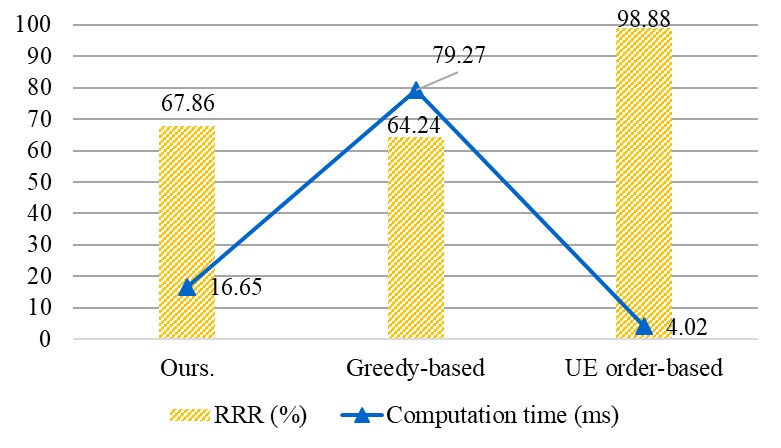
Figure 5. Average RRR and Computation time cost comparison
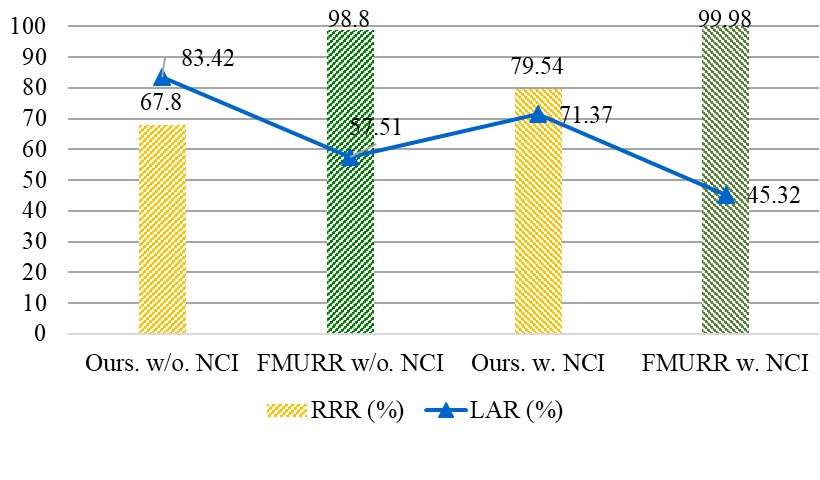
Figure 6. Average RRR and LAR comparison
4 Conclusion
Given the limited radio resources in wireless communication systems, efficient resource reservation with minimal waste is essential for low-latency networks. To meet low-latency requirements with reduced resource waste, we propose a novel graph clustering-based resource reservation solution. Simulation results demonstrate improvements of up to 31% in RRR and 25.91% in LAR against the baselines. Future work will extend this solution to diverse LLS scenarios and incorporate AI-based methods for determining the weight factor.
References
[1] M. E. Haque, F. Tariq, M. R. A. Khandaker, K.-K. Wong, and Y. Zhang, “A survey of scheduling in 5G URLLC and outlook for emerging 6G systems,” IEEE Access, vol. 11, pp. 34 372–34 396, Apr. 2023.
[2] S. Jun, Y. Kang, J. Kim, and C. Kim, “Ultra-low-latency services in 5G systems: A perspective from 3gpp standards,” ETRI, vol. 42, pp. 721–733, Nov. 2020.
[3] V. Fernandez-Viagas, R. Ruiz, and J. M. Framinan, “A new vision of approximate methods for the permutation flowshop to minimise makespan: State-of-the-art and computational evaluation,” European Journal of Operational Research, vol. 257, no. 3, pp. 707–721, 2017.

